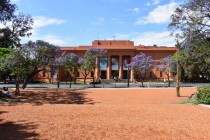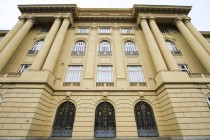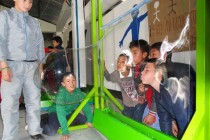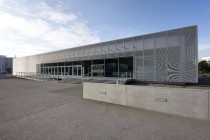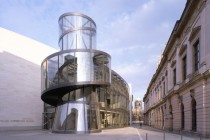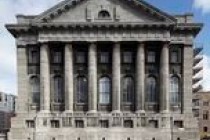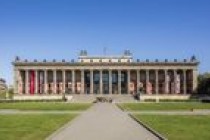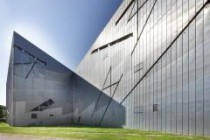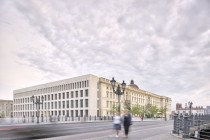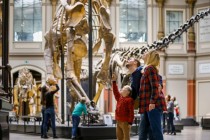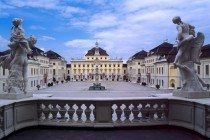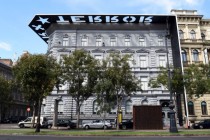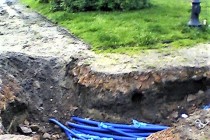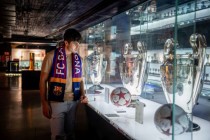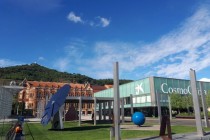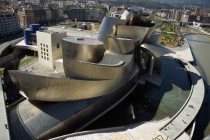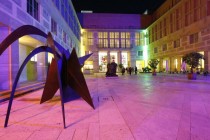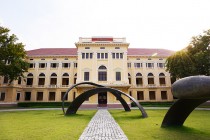Museum of Latin American Art of Buenos Aires (MALBA) established in 2001.
It collects and shares Latin American art from the beginning of the 20th century to the present day. The collection has paintings, e.g. Kahlo, Rivera, Lam.
| Country | Location | Museum | Rank | Voting | Website | Type | More | |
|---|---|---|---|---|---|---|---|---|
| Argentina | Buenos Aires | Museum of Latin American Art of Buenos Aires | 102. | 332 | Art | More | ||
| Argentina | Buenos Aires | Museo Nacional de Bellas Artes | 166. | 302 | Art | More | ||
|
The Museo Nacional de Bellas Artes was inaugurated in 1896.
The MNBA collection includes pre-Columbian, colonial, Argentinean and international art, from the 3rd century BC to the present day. The MNBA's collections include works by, among others: El Greco, Francisco de Goya, Édouard Manet, Claude Monet, Edgar Degas, Pierre-Auguste Renoir, Vincent van Gogh, Paul Gauguin, Pablo Picasso, Amedeo Modigliani, Marc Chagall, Vassily Kandinsky, Paul Klee, Jackson Pollock, Mark Rothko, and Henry Moore. Argentine art is represented, for example, by: Antonio Berni, Marta Minujín and León Ferrari, and Latin American art, for example, by: Joaquín Torres García, Diego Rivera and Jesús Rafael Soto. The total number of exhibits in the collection is over 12,000. The exhibition area covers 4,610 square meters. |
||||||||
| Argentina | Buenos Aires | National Historical Museum | 395. | 280 | National - history | More | ||
|
National Historical Museum (Museo Histórico Nacional) was established in 1889. It officially opened to the public in 1891.
The National Historical Museum houses a vast collection of artifacts that chronicle Argentina’s history, focusing primarily on the country's struggle for independence and the 19th century. Key highlights of its collections include: 1. Historical Artifacts and Memorabilia - Weapons: Swords, sabers, and guns used during the independence wars. - Flags and Banners: National flags, including those used by revolutionary armies. - Military Uniforms: Uniforms of key figures like General José de San Martín and other military leaders. 2. Personal Belongings of National Heroes - Items that belonged to José de San Martín, Manuel Belgrano, and Juan Manuel de Rosas, among others. - San Martín's saber: One of the museum’s most treasured items. 3. Documents and Manuscripts - Original letters, decrees, and proclamations from the independence era. - Treaties and correspondence between revolutionary leaders. 4. Fine Art Collection - Paintings depicting significant moments in Argentine history, such as battles and revolutionary events. - Works by renowned Argentine artists like Cándido López, who documented the Paraguayan War (War of the Triple Alliance) through his paintings. 5. Furniture and Everyday Items - 19th-century furniture from notable homes and public buildings. - Items showcasing daily life during Argentina’s formative years. 6. Religious and Cultural Artifacts - Religious items, including crosses and church relics, reflecting the role of the Catholic Church in Argentina’s history. 7. Numismatics and Medals - Coins, medals, and currency from Argentina’s early years as a nation. 8. Archaeological Artifacts - Pre-Columbian artifacts from various indigenous cultures, offering insight into Argentina’s history before colonization. The National Historical Museum has a collection of approximately 50,000 artifacts, about 4,000 artifacts are on display. The museum complex, including its gardens and exhibition spaces, covers approximately 4,000 square meters. The exhibition area itself is around 1,600 square meters. |
||||||||
| Australia | Brisbane | Queensland Art Gallery & Gallery of Modern Art | 65. | 679 | Art | More | ||
|
Queensland Art Gallery & Gallery of Modern Art (QAGOMA) have been working together since 2006. In total, they cover an area of nearly 30,000 square meters. They present contemporary art of Australia, Asia and the Pacific. Their collections include works by others: Pablo Picasso, Willem de Kooning, Nam June Paik, Cindy Sherman, and James Turrell. QAGOMA includes the Children's Art Center.
|
||||||||
| Belgium | Brussels | Royal Museums of Fine Arts of Belgium | 212. | 300 | Art | More | ||
|
Royal Museums of Fine Arts of Belgium founded in 1803.
It consists of the Oldmasters Museum, Modern Museum, Magritte Museum, Fin-de-Siècle Museum, Meunier Museum, Wiertz Museum. It has 20,000 paintings, sculptures and drawings that date from the beginning of the 15th century to the present day. The collected works of art are by, among others: Pieter Bruegel, Peter Paul Rubens, Jacques Jordaens, Paul Gauguin, Vincent van Gogh, Salvador Dalí, Paul Delvaux, René Magritte, Henry Moore. |
||||||||
| Belgium | Brussels | Bozar | 285. | 174 | Art | More | ||
|
The Center for Fine Arts, opened in 1928, has been using the name BOZAR since 2002.
It includes exhibition and conference rooms, a cinema and a concert hall. In total, it covers an area of 33,000 square meters. BOZAR organizes up to 10 exhibitions per year. |
||||||||
| Brazil | Belo Horizonte | Centro Cultural Banco do Brasil | 237. | 192 | Art | More | ||
|
Centro Cultural Banco do Brasil Belo Horizonte (CCBB BH) was opened in 2013.
It has, among others, 6 exhibition rooms, an educational program room, a multimedia room, and a cultural goods warehouse. It has an area of 12,000 square meters. Foto Vagner Costa |
||||||||
| Brazil | Brasília | Centro Cultural Banco do Brasil | 134. | 327 | Art | More | ||
|
Centro Cultural Banco do Brasil, Brasília opened in 2000. It covers an area of 7,000 square meters.
Museu Banco do Brasil has in its collection works of artists from the first half of the 20th century, such as Bruno Giorgi, Candido Portinari, Emiliano Di Cavalcanti. |
||||||||
| Brazil | Brasilia | Museu Nacional da República | 201. | 209 | Art | More | ||
|
Museu Nacional da República also called Honestino Guimarães Museu Nacional inaugurated in 2006.
Together with the National Library of Brasília, it is part of The Complexo Cultural da República. Museu Nacional da República it is a space that inserts Brasília into the international arts circuit and shows the best in Brazilian art. The space is used for itinerant exhibitions by renowned artists and themes important to society, lectures, film shows, seminars and important events. The most important temporary exhibitions to date include: - Niemeyer & Niemeyer e Brasília - Patrimônio da Humanidade (2006), - Imagens impressas: Um percurso histórico pelas gravuras da Coleção Itaú Cultural (2018). The museum consists of an exhibition section divided into three floors connected by ramps and a mezzanine with an area of 14,500 square meters, two auditoriums with 780 seats and a laboratory. |
||||||||
| China | Beijing | National Museum of China | 3. | 1026 | National | More | ||
|
The museum was founded in 2003 by merging two museums: Museum of the Chinese Revolution and National Museum of Chinese History.
The permanent exhibition consists of over one million exhibits. The most important are "Simuwu Ding" from the Shang Dynasty, the square shaped Shang Dynasty bronze zun, jade burial suits sewn with gold thread from Han Dynasty and Song Dynasty ceramics. The museum has a unique numismatic collection. |
||||||||
| China | Beijing | Forbidden City | 6. | 1428 | Historic house | More | ||
|
Forbidden City (Palace Museum of Beijing) established in 1925. It was built between 1406 and 1420. During the Ming and Qing dynasties, i.e. in the years 1420–1912 it was the Chinese imperial palace. The entire complex includes 980 buildings located on an area of 112 hectares.
|
||||||||
| China | Beijing | China Science and Technology Museum | 12. | 566 | Science and technology | More | ||
|
China Science and Technology Museum founded in 1988. Area: 48,000 square meters.
It presents popular science exhibitions, Astro-vision film screenings, training-based educational programs and experimental-based exhibition programs. Topics: Glories of China and Science Paradise, Exploration and Discovery, Sci-tech and Life and The Challenges and the Future. |
||||||||
| China | Beijing | Beijing Museum of Natural History | 64. | 2501 | Natural history | More | ||
|
Beijing Museum of Natural History founded in 1951.
With 24,000 square meters, the exhibition's total area is 8,000 square meters. The collection includes paleontological specimens, invertebrates, birds and mammals, in total over 200,000 specimens. |
||||||||
| China | Beijing | Military Museum of the Chinese People's Revolution | 171. | 173 | Military | More | ||
|
The Military Museum of the Chinese People's Revolution (Chinese Military Museum) opened to the public in 1960.
The museum collects, among other things, equipment from the Chinese space program, such as satellites and a two-seater orbital capsule, jet fighters, rockets, rocket launchers, cruise missiles, artillery, fleets, tanks, armored personnel carriers, anti-aircraft weapons, small arms, ammunition, military uniforms, flags , medals, badges, seals, coins, documents. Among the collected objects you can see: Qin Terracotta Warriors, cars of Zhu De and Mao Zedong, Chinese first atomic bomb, A Dongfeng 2 (CSS-1) medium-range balltistic missile. The collected collections span 5,000 years of Chinese history. The museum has over 180,000 exhibits. The museum building covers an area of 153,000 square meters, of which approximately 60,000 square meters are exhibition space. |
||||||||
| China | Beijing | China Aviation Museum | 362. | 295 | Aviation | More | ||
|
The China Aviation Museum was established in 1989.
The China Aviation Museum in Beijing hosts one of the world’s most extensive aviation collections, curated across three major exhibition areas: the Cavern Exhibition Hall, the Integrated (Masterpiece) Hall, and the Open‑Air Exhibition Area. The museum boasts over 200–300 aircraft, plus a vast array of missiles, radars, engines, artifacts, and archival items. 1. Cavern Exhibition Hall - Set in a former underground bunker carved into Datangshan Mountain (~586 m long). - Features a historical display of aviation development from early flight to modern jets. - Highlights include early Chinese prototypes like the Feng Ru II, Beijing‑1, and Soviet-era types (e.g. La‑9, La‑11, Tu‑2, Yak‑17) alongside models from global aviation. 2. Integrated Hall - A two-floor building showcasing aviation milestones and key figures from the PLA Air Force. - Displays include historic fighter planes and tribute installations to military aviation heroes. 3. Open‑Air Exhibition Area - Outdoor display spanning around 40,000 m², showcasing civilian and military aircraft, air defense systems, and radar installations. - Noteworthy exhibits: • Mao Zedong’s personal Ilyushin Il‑14 VIP transport—visible both inside and out. • Historic aircraft: C‑46, Li‑2, Trident, Y‑7, Airbus A310‑200, and more. • Weaponry exhibits: surface‑to‑air missiles (e.g., Chinese HQ‑2), anti‑aircraft guns, bombs, parachutes, cameras. Additional Highlights - Global selection of over 200 military aircraft from countries like the U.S., Soviet Union, Japan, and the Czech Republic. - Unique machines: early models like the Mosquito bomber, P‑51 Mustang, P‑61 Black Widow, MiG‑15/17/23, Shenyang J series, and rare drones like the Lockheed D‑21. - Also houses aircraft engines (both piston and jet), avionics equipment, flight gear, engine cut‑aways, and scientific exhibits including wind tunnels and educational materials. - Over 2,468 missiles/radars, 10,000 aviation relics, 20,000+ technical documents, and over 1,000 international gifts. |
||||||||
| Colombia | Bogotá | National Museum of Colombia | 242. | 212 | National - art,... history, archeology, ethnography | More | ||
|
The National Museum of Colombia (Museo Nacional de Colombia) founded in 1823 is one of the oldest in the Americas.
The art collection includes works by Colombian artists such as Andrés de Santa María, Santiago Martínez Delgado, Gustavo Arcila Uribe, Fernando Botero as well as Latin American and European art. The museum's collection includes a treasury of pre-Columbian goldsmiths, a coat of one of the wives of the Inca emperor Atahualpa, a banner used by Francisco Pizarro during the conquest of Peru, a crown of gold, diamonds and pearls given to Simón Bolívar in Cuzco in 1825. The museum has a collection of over 20,000 artifacts, of which about 2,500 are presented at exhibitions. An area of 3,000 square meters. |
||||||||
| Colombia | Bogotá | Museo de la Ciencia y el Juego | 389. | 213 | Museo interactivo... de ciencia | More | ||
|
El Museo de la Ciencia y el Juego, MCJ, creado en 1984, ha venido realizando programas, proyectos y actividades en el campo de la popularización y divulgación de la ciencia y la tecnología, no solo en Colombia sino en la región, siendo pionero en su campo: fue el primer museo interactivo de ciencia en Colombia, el segundo en Suramérica y el tercero en Latinoamérica. Gracias al éxito de sus propuestas ha servido de base o ejemplo a otras iniciativas. En 1997 se hizo merecedor al Primer Premio Latinoamericano de Popularización de la Ciencia y la Tecnología otorgado por la UNESCO y la Red de popularización de la Ciencia y la Tecnología en América Latina y el Caribe, Red-POP por su programa Red de pequeños museos interactivos.
Lo que ha hecho el MCJ es tejer redes a lo largo de su existencia. Es miembro fundador de la Red Pop, de la que ejerció la Secretaría Ejecutiva en el bienio 2000 – 2001 y posteriormente la coordinación del Nodo Andes de la Red-POP. También fue gestor de Liliput, red de pequeños museos del Área Andina, de la cual ejerce actualmente la dirección ejecutiva y de la Escuela Latinoamericana de Museología de las Ciencias. El Museo realiza alrededor de 13 programas que constituyen la urdimbre y la trama de las redes que ha venido tejiendo a lo largo de más de 25 años de actividades. |
||||||||
| Germany | Berlin | Topography of Terror | 109. | 343 | Memorial | More | ||
|
The Topography of Terror opened to the public in 2010.
During the Third Reich (1933-1945), the site currently occupied by The Topography of Terror was the seat of the Gestapo, SS and the Reich Main Security Office. Nazi buildings were destroyed by the Allied bombing in 1945. Later the Berlin Wall passed through this place. A large part of the Wall in The Topography of Terror survived to this day. The first exhibitions in this place took place from 1987. Entrance to the documentation center |
||||||||
| Germany | Berlin | Berlin Wall Memorial | 153. | 230 | Memorial | More | ||
|
The Berlin Wall Memorial created in 1998 commemorates the division of Berlin by Walls and the victims of the Berlin Wall. It stretches along 1.4 kilometers of the former border strip between Berlin (the capital of the DDR) and West Berlin. Fall of the Berlin Wall in 1989. The Wall Memorial includes: the outdoor memorial site with the last piece of the Berlin Wall, Documentation center, Chapel of Reconciliation, memorial window and Visitor Service Center,
|
||||||||
| Germany | Berlin | German Historical Museum | 213. | 162 | History | More | ||
|
The German Historical Museum (DHM) was founded in 1987 and opened its first exhibitions to the public in 1991.
DHM presents the history of Germany from the Middle Ages (when formally there was no country using the name Germany) to the present day in an international context. The collection comprises about 1,000,000 exhibits. You can see, among others, the boat that escaped two GDR citizens or the prosthetic hand of a medieval knight. |
||||||||
| Germany | Berlin | Pergamonmuseum | 255. | 488 | Art | More | ||
|
Pergamonmuseum opened to the public in 1930.
It is part of the Staatliche Museen zu Berlin belonging to Stiftung Preußischer Kulturbesitz. The exhibition is divided into Antiquities Collection, Museum of the Ancient Near East, Museum of Islamic Art. The Pergamonmuseum collects monuments of ancient architecture, e.g. the Pergamon Altar, the Ishtar Gate. Pergamonmuseum Am Kupfergraben, Museumsinsel Berlin, Berlin-Mitte © Staatliche Museen zu Berlin / Maximilian Meisse |
||||||||
| Germany | Berlin | Altes Museum | 286. | 306 | Art | More | ||
|
The Altes Museum opened to the public in 1830.
It is part of the Staatliche Museen zu Berlin belonging to Stiftung Preußischer Kulturbesitz. Currently, the Altes Museum houses the Antikensammlung (Collection of Classical Antiquities) and part of the Münzkabinett. The Antikensammlung is composed of the art of the Greeks (10th - 1st century BC), Etruscans and Romans. In addition to stone carvings and ceramics, you can see here products made of gold and precious stones. The Münzkabinett presents over 1,300 coins (7th century BC - 3rd century AD). Altes Museum Am Lustgarten, Museumsinsel Berlin, Berlin-Mitte © Staatliche Museen zu Berlin / David von Becker |
||||||||
| Germany | Berlin | Jewish Museum Berlin | 290. | 173 | History | More | ||
|
The Jewish Museum Berlin was opened in 2001.
It is the largest Jewish museum in Europe. The museum presents the history of Jews in Germany from the Middle Ages to the present day from a Jewish point of view. The permanent exhibition "Jewish life in Germany: the past and the present", opened in 2020, covering an area of over 3,500 square meters, has more than 1,000 objects, of which over 70% comes from the museum's own collection. The museum's collection is divided into four areas: ceremonial and applied arts, fine arts, photography and everyday culture. © Jüdisches Museum Berlin, Foto: Jens Ziehe |
||||||||
| Germany | Berlin | Humboldt Forum | 292. | 213 | Ethnography, art,... history | More | ||
|
The Humboldt Forum, open to the public in 2021, is located in the Berlin Palace on the Museum Island.
The Humboldt Forum houses the non-European collections of Berlin's state museums. The Humboldt Forum consists of the Stiftung Preußischer Kulturbesitz with the Ethnologisches Museum and the Museum für Asiatische Kunst der Staatlichen Museen zu Berlin, the Stadtmuseum Berlin together with Kulturprojekte Berlin, the Humboldt-Universität zu Berlin and the Stiftung Humboldt Forum im Berliner Schloss. Photo © SHF/Alexander Schippel |
||||||||
| Germany | Berlin | Natural History Museum Berlin | 305. | 231 | Natural history | More | ||
|
The Natural History Museum - Leibniz Institute for Evolution and Biodiversity Science (Museum für Naturkunde [MfN] - Leibniz Institut für Evolutions und Biodiversitätsforschung) dates back to 1810.
MfN is one of the world's most important research institutions in the field of biological and geoscientific evolution and biodiversity. MfN has in its collections, inter alia, the largest mounted dinosaur in the world (a Giraffatitan skeleton) and the largest piece of amber in the world. MfN stores over 30 million objects in the field of zoology, palaeontology, geology and mineralogy, of which 0.02% is exhibited. The exhibition area is 4,400 square meters. Dinosaur Hall in the Museum für Naturkunde Berlin, visible, among others, a fragment of a Giraffatitan brancai skeleton. Photo: Thomas Rosenthal |
||||||||
| Germany | Bonn | House of the History | 168. | 158 | History | More | ||
|
Haus der Geschichte, Bonn (House of the History of the Federal Republic of Germany) together with the Zeitgeschichtliches Forum, Leipzig and Tränenpalast, Berlin and the Museum in der Kulturbrauerei, Berlin are part of the Haus der Geschichte Foundation, Bonn.
House of the History, Bonn opened to the public in 1994. It presents the history of Germany in international terms from 1945 to the present. The exhibition area of 4,000 square meters houses over 7,000 exhibits. The House of the History and the German Historical Museum, in collaboration with the German Federal Archives, run the LeMO (Lebendiges Museum Online) Living Museum Online - an online portal on German history that covers the period from the 19th century to the present day. LeMO available online since 1999. |
||||||||
| Germany | Bruchsal | Staatliche Schlösser und Gärten Baden-Württemberg | 107. | 345 | Historic house | More | ||
|
Staatliche Schlösser und Gärten Baden-Württemberg (SSG; State Palaces and Gardens of Baden-Wuerttemberg) state heritage agency, an institution of public law established in 1987.
Looks after 62 palaces, gardens, castles, monasteries, ancient Roman bath ruins, sepulchral chapels, Celtic city, Domnick Collection, Prince's Little House located (or called) in Heidelberg, Ludwigsburg, Weikersheim, Schwetzingen, Bruchsal, Mannheim, Rastatt, Mergentheim , Solitude (Stuttgart), Meersburg, Tettnang, Ellwangen, Urach, Kirchheim, Salem, Bebenhausen, Karlsruhe, Hohentwiel, Rötteln, Hohenneuffen, Hochburg, Wäscherschloss, Dilsberg, Badenweiler, Yburg, Alt-Eberstein, Hohenstaufen, Maulenbronnor, Wiulenbronnor, Schussenried, Grosscomburg, Hirsau, Schöntal, Alpirsbach, Ochsenhausen, Heiligkreuztal, Stuttgart, Heuneburg, Nürtingen, Hüfingen, Meersburg. Photo: Ludwigsburg Residential Palace, Exteriors; Staatliche Schlösser und Gärten Baden-Württemberg, Ralf Cohen |
||||||||
| Hungary | Budapest | Hungarian National Museum | 227. | 428 | History, art, archeology | More | ||
|
Magyar Nemzeti Múzeum (Hungarian National Museum) founded in 1802.
In the museum you can see the coronation mantle ordered by King Stephen I and his queen consort Gisela in 1031, Scythian gold products, Seuso Treasure - silver vessels from the late Roman Empire (4th - 5th centuries), crown of Constantine IX Monomachos (Byzantium , 1042–1050), Mozart's traveling clavicord, a grand piano belonging first to Ludwig van Beethoven and later to Ferenc Liszt. The museum covers an area of 8,000 square meters. |
||||||||
| Hungary | Budapest | Museum of Fine Arts | 289. | 184 | Art | More | ||
|
The Museum of Fine Arts opened to the public in 1906.
The collection is divided into 6 sections: ancient Egypt, ancient Greece and Rome, painting (13th-18th century), sculpture (from the Middle Ages to the 17th century), drawings and prints, art after 1800. The collection includes works by, among others, Domenico Ghirlandaio, Giorgione, Titian, Leonardo da Vinci, Tintoretto, Dürer, Lucas Cranach the Elder, Pieter Bruegel the Elder, Rubens, Frans Hals, El Greco, Velázquez, Goya, Eugène Delacroix, Jean-Baptiste -Camille Corot, Gustave Courbet, Édouard Manet, Claude Monet, Camille Pissarro, Pierre-Auguste Renoir, Henri de Toulouse-Lautrec, Auguste Rodin and Constantin Meunier. The number of works of art in the museum exceeds 120,000. |
||||||||
| Hungary | Budapest | House of Terror Museum | 343. | 240 | Memorial | More | ||
|
The House of Terror Museum was opened in 2002.
The House of Terror Museum is a memorial to the victims of the fascist and communist regimes in 20th-century Hungary. In the museum, you can see, among other things, the cells in which ÁVH (Államvédelmi Hatóság - communist secret police 1945–1956) held prisoners and the T-54 tank. |
||||||||
| India | Bhopal | Indira Gandhi Rashtriya Manav Sangrahalaya | 187. | 185 | National - anthropology,... ethnography | More | ||
|
Indira Gandhi Rashtriya Manav Sangrahalaya (IGRMS) or National Museum of Mankind, an autonomous organisation of the Ministry of Culture, Government of India, began functioning in March 1977 to present the living vulture of the diverse culture of communities across India. It has a regional Centre in Southern India at Mysore that started functioning in October 2001 from a heritage building 'Wellington House' allotted by the Government of Karnataka.
The mandate of the Museum includes the presentation of an integrated story of the bio-cultural evolution of humankind through outdoor and indoor exhibitions by highlighting the richness and diversity of cultural patterns of India and its underlying unity; to act as a Centre of research and training in museology and generate a new museum movement in India and to present and preserve a variety of cultural life. IGRMS is also working for national integration, and promoting research & training and inter-organizational networking for salvage and revitalisation of vanishing, but valuable cultural traditions. The innovative aspects of the organization are its open-air and indoor exhibitions, built with the active involvement of traditional artisans and experts drawn from different community groups, and the education, outreach & salvage activities in different parts of the country. Through its exhibitions, education programmes and salvage activities, IGRMS demonstrates the aesthetic qualities of India's traditional lifestyles, and the continued relevance of local traditional knowledge and mores of people to the modern society and cautions the people against unprecedented destruction of ecology and environment, local values and customs. The programmes and activities of the organisation are carried out under three sub-schemes namely: 1. Infrastructure Development : (Development of Museum Complex), 2. Education and Outreach Programme, 3. Operation Salvage. |
||||||||
| Lebanon | Baalbek | Baalbek | 369. | 162 | Archaeological site | More | ||
|
Baalbek Archaeological Site
1. Prehistoric Beginnings - Neolithic Period (~9000 BC): Archaeological evidence suggests that Baalbek was inhabited as early as the Neolithic period. Its location in the Beqaa Valley made it ideal for early human settlement due to fertile lands and access to water. - It likely began as a small agrarian community. 2. Canaanite and Phoenician Era - By the 3rd millennium BC, Baalbek was a prominent religious site for the Canaanites and later the Phoenicians. - It was dedicated to Baal, the storm and fertility god, and Astarte, the goddess of love and war. The name "Baalbek" means "Lord (Baal) of the Beqaa." - The site was home to temples and altars built for rituals to honor these deities. 3. Hellenistic Period (4th–1st Century BC) - After the conquests of Alexander the Great in the 4th century BC, Baalbek fell under Hellenistic influence and was renamed Heliopolis, meaning "City of the Sun." - Greek culture and religious practices mingled with local traditions, but Baalbek remained a significant religious center. 4. Roman Period (1st Century BC – 4th Century AD) - Baalbek reached its zenith during Roman rule. - Around the 1st century BC, the Romans began an ambitious construction project to build massive temples dedicated to their gods. The Temple of Jupiter: One of the largest religious structures in the Roman world. The Temple of Bacchus: A remarkably well-preserved and ornate temple. The Temple of Venus: A smaller but elegant temple. - Baalbek became a pilgrimage site and showcased Roman engineering and architectural grandeur. - The city was part of the Roman province of Syria and later the Byzantine Empire, continuing its religious importance. 5. Islamic Period (7th–13th Century CE) - Baalbek fell to the Muslim armies during the 7th century CE, under the Rashidun Caliphate. - Its religious role shifted, with some Roman temples converted into mosques or repurposed. - Under the Umayyads, Abbasids, and later Mamluks, Baalbek retained its significance as a regional center and was fortified against invaders. 6. Medieval Period - The Crusaders briefly occupied Baalbek during the 12th century but were unable to hold it for long. - The city returned to Muslim control and continued to flourish under the Mamluks, who added fortifications and other structures. 7. Ottoman Period (1516–1918) - Under Ottoman rule, Baalbek became a quieter provincial town. - Its ruins were rediscovered by European travelers during the 18th and 19th centuries, sparking archaeological interest. Here are the main monuments: 1. Temple of Jupiter Dedicated to Jupiter Heliopolitanus, the chief deity of the Roman pantheon. - This was the largest temple in the Roman world, with a massive podium and towering columns. Originally, it had 54 columns, each standing 20 meters high and 2.2 meters in diameter. Today, only 6 columns remain standing. - The sheer scale of this temple underscores its importance as a religious and political statement of Roman power. 2. Temple of Bacchus Dedicated to Bacchus, the god of wine, fertility, and revelry. - Often mistaken as the Temple of Jupiter due to its grandeur, the Temple of Bacchus is exceptionally well-preserved. - It features richly decorated friezes and reliefs depicting vines, mythical creatures, and Roman deities. - The temple measures approximately 69 meters in length and 36 meters in width, with 42 columns, each 19 meters tall. 3. Temple of Venus Dedicated to Venus, the goddess of love and beauty. - A smaller but elegantly designed temple, known for its curvilinear and circular shape, which contrasts with the more rectilinear designs of the other temples. - The temple stands apart from the main complex and exhibits unique features of Roman decorative styles. 4. The Great Court Served as the grand entrance to the Temple of Jupiter and a gathering space for worshipers. - The court measures about 135 meters by 113 meters and features altars, pools, and smaller structures used for rituals. - Its layout includes a hexagonal forecourt, surrounded by columns and flanked by staircases leading to the temples. - 5. The Hexagonal Court - Transitional space between the Great Court and the Temple of Jupiter. - This court is unique in its hexagonal shape, surrounded by a colonnade. - It was used for ceremonies and as a preparatory area for pilgrims approaching the temples. 6. Propylaea (Monumental Entrance) The grand gateway leading into the temple complex. - Features a wide staircase and a colonnaded structure, creating a dramatic approach to the temples. - The Propylaea was a symbol of the grandeur and sanctity of the site. 7. Stone of the Pregnant Woman (Hajar al-Hibla) An unfinished monolith lying in a nearby quarry. - This is one of the largest monolithic stones ever quarried, estimated to weigh over 1,000 tons. - Its purpose remains debated, but it is believed to have been intended for the Temple of Jupiter. 8. Other Features - Roman Columns: Scattered across the site, these towering structures showcase the intricate craftsmanship of Roman engineers. - Underground Passages: Likely used for rituals or as service areas for temple activities. - Byzantine and Islamic Additions: Later modifications include a Christian basilica and Islamic fortifications. The Baalbek archaeological site occupies a total area of approximately 5 hectares (about 12 acres). Here are the key museums that showcase Baalbek's treasures: 1. Baalbek Museum - Displays artifacts excavated from the site, including statues, inscriptions, reliefs, and architectural elements. - Items date from the Phoenician, Hellenistic, Roman, Byzantine, and Islamic periods. - Provides visitors with context about the site's history and significance. 2. National Museum of Beirut - One of the most important museums in Lebanon, it houses a rich collection of artifacts from across the country, including items from Baalbek. - Exhibits include Roman-era statues, mosaics, and inscriptions, many of which were discovered at Baalbek. - The museum's collection also features sarcophagi and other items that illustrate daily life and religious practices in ancient Baalbek. 3. American University of Beirut (AUB) Archaeological Museum - Houses a collection of artifacts from various archaeological sites in Lebanon, including Baalbek. - Items include pottery, tools, and small objects that reflect the daily lives of Baalbek's ancient inhabitants. 4. Louvre Museum - The Louvre has a significant collection of artifacts from the Levant, including items from Baalbek. - Objects include reliefs, sculptures, and inscriptions brought to Europe during 19th and early 20th-century excavations. 5. British Museum - Features a collection of items from Lebanon and the wider Levant, including materials linked to Baalbek. - Displays include Roman sculptures, inscriptions, and other artifacts acquired during archaeological missions in the region. 6. Pergamon Museum - Known for its collection of ancient artifacts from the Near East, it includes items related to Roman and Hellenistic Baalbek. - Architectural fragments and reliefs may be tied to Baalbek's influence in the region. 7. Local Museums in Lebanon - Other smaller museums in Lebanon, such as the Museum of Lebanese Prehistory (Saint Joseph University, Beirut), may also house artifacts from Baalbek or provide insights into the region’s broader archaeological context. |
||||||||
| New Zealand | Blenheim | Omaka Aviation Heritage Centre | 379. | 146 | Aviation | More | ||
|
Omaka Aviation Heritage Center was opened in 2006.
A collection of planes from World War I and II, e.g. - Curtiss Models F Flying Boat - Airco DH.4 - Thomas-Morse S-4 "Tommy Scout" - Messerschmitt Bf 108 - Lockheed Hudson - de Havilland DH.98 "Mosquito" - Curtiss P-40N Kittyhawk "Gloria Lyons" - Supermarine Spitfire Mark XIV (Griffon-powered variants) - Focke-Wulf Fw 190 as well as military uniforms, logbooks, photos, letters. |
||||||||
| Poland | Baths | "Baths" | 419. | 172 | "Baths" | More | ||
|
The Baths independent museum since 1995.
In its present shape, Baths established in the second half of the 18th century by Stanisław August Poniatowski, who, through the bed of the later Catherine II Empress of Russia (he had a daughter with her), came to the throne of Poland (at that time Poland was under Russian protectorate and was subjected to another three partitions, which ended the existence of the First Polish Republic). The park and palace complex covers 76 hectares. Before the parliamentary and local government elections, the directors of the so-called Baths: - acting Marianna O., - deputy director for Hunting and Horsemanship Piotr Ś., the so-called department child and hunting companion of former president Bronisław K. (PO), - plenipotentiary for the organization of the Branch of the Museum of Hunting and Horsemanship Marek Z. - director's plenipotentiary for organization of exhibitions and promotion Branch of the Museum of Hunting and Horsemanship Marzena J. trying to take over the premises of the Virtual Museum of the Unbroken Soldiers, dedicated to the Polish independence and anti-communist underground after World War II, the oldest museum of this kind in Poland. Deputy Prime Minister Piotr G. (PiS) and Secretary of State Jarosław S. (PiS) are responsible for appointing the directors (without competition). Piotr Ś. is known, among others, for from conducting in the so-called a museum of a company dealing with the organization of hunting for foreigners and trade in chemicals (e.g. https://zwokandy.blogspot.com/2014/05/tu-t.html, https://zwokandy.blogspot.com/2016/12/brak-reakcji-ministerstwa.html) and false accusations of an employee of the so-called museum about the theft of a stuffed mallard duck (e.g. https://zwokandy.blogspot.com/2014/05/nieprawdziwe-oskarzenia-o-kradziez.html, https://zwokandy.blogspot.com/2014/05/zmiany-w-protokole-rozprawy-stronniczy.html, https://zwokandy.blogspot.com/2014/11/wystepy-p-piotra-s-w-sadzie.html, https://zwokandy.blogspot.com/2018/06/zorganizowana-gp-byy-d-piotr-s-tzw-sso.html) and "hijacking" copyrights (e.g. https://zwokandy.blogspot.com/2014/05/fotografie-na-stronie-internetowej.html https://zwokandy.blogspot.com/2022/08/sprawiedliwosc-4.html) and using the Star of David as the museum's sheriff's star in children's games (https://zwokandy.blogspot.com/2014/05/gwiazda-szeryfa-muzeum.html) |
||||||||
| Romania | Bucharest | National Museum of the Village "Dimitrie Gusti" | 240. | 178 | Ethnographic open-air... museum | More | ||
|
National Museum of the Village "Dimitrie Gusti" (Muzeul National al Satului "Dimitrie Gusti") founded in 1936.
On the premises of the museum there are farms, peasant houses, craft workshops, Orthodox churches, a chapel, an inn with interior furnishings such as furniture, ceramics, fabrics, tools. Most of the buildings are 17th to 20th century originals from all over Romania. The permanent exhibition includes 123 separate complexes, which include 363 architectural monuments and over 50,000 artifacts. The exhibition area is approximately 12.5 ha. |
||||||||
| Serbia | Belgrade | National Museum of Serbia | 332. | 261 | National – art,... archeology, history, numismatics | More | ||
|
The National Museum of Serbia was founded in 1844.
The collections of the National Museum of Serbia include: 1. Art - European and Serbian paintings: The collection includes works by artists such as Monet, Cézanne, Van Gogh, Picasso and Serbian masters such as Nadežda Petrović, Paja Jovanović and Uroš Predić. - Icons and Sacred Art: Collection of Byzantine and post-Byzantine icons related to the Orthodox tradition of Serbia. 2. Archeology - Artifacts from the prehistoric era: Objects dating back to the Neolithic, Bronze and Iron periods, including famous finds from the Vinča culture. - Ancient collections: A rich collection of sculptures, ceramics, jewelry and coins from the times of ancient Greece, Rome e.g. the Belgrade Cameo (2nd - 4th century AD) and bronze bust of Roman emperor Constantine the Great (around 325), and the Byzantine Empire. 3. Numismatics - The museum has one of the largest numismatic collections in the Balkans, with coins and medals from antiquity to modern times. There are Greek, Roman, Byzantine, Serbian medieval, Ottoman and European coins. 4. Sculpture and applied art - Sculptures from antiquity to modern art, with particular emphasis on Serbian and European sculpture. - Applied art includes items such as ceramics, jewelry, fabrics and everyday objects from various eras. 5. Modern and contemporary art - Works by contemporary Serbian and European artists, including paintings, sculptures and installations. 6. Ethnography - Collections related to the material culture of the peoples living in the Balkans, including folk costumes, tools and objects of everyday use. The National Museum of Serbia has over 400,000 exhibits in its collection, and about 3,000 items are displayed in the museum's permanent exhibitions. The permanent exhibitions of the National Museum of Serbia cover an area of approximately 5,000 square meters. |
||||||||
| South Korea | Busan | National Maritime Museum | 253. | 255 | Maritime | More | ||
|
National Maritime Museum opened in 2012.
The exhibitions focus on all aspects of marine and ocean life, from sea creatures to the history of the maritime industry based on 5,000 years of maritime culture. In the museum, you can see, among others, a replica of the Ship of Joseon Envoy. Over 12,000 artefacts are presented at the exhibitions. The museum covers an area of 45,444 square meters, including a total floor area of 25,870 square meters. |
||||||||
| Spain | Barcelona | Sagrada Família | 119. | 219 | Temple | More | ||
|
Sagrada Família started in 1882, not yet completed Roman Catholic minor basilica. Designed by Antoni Gaudí (1852–1926) in Style Modernisme. Length 90 meters, width 60 meters, planned height 172.5 meters. The Sagrada Familia has a museum inaugurated in 1961.
|
||||||||
| Spain | Barcelona | Museu Picasso | 151. | 827 | Art | More | ||
|
The Museu Picasso opened in 1963.
The museum has over 4,000 works by the painter Pablo Picasso (1881-1973). The permanent exhibition features the artist's painting, drawing, engraving, and ceramics. The Museu Picasso was the first museum in the world dedicated to the work of Pablo Picasso and the only one created during his lifetime. The total area of the museum is over 12,000 square meters. |
||||||||
| Spain | Barcelona | Museu Nacional d'Art de Catalunya | 219. | 276 | Art | More | ||
|
Museu Nacional d'Art de Catalunya (MNAC) opened in 1934, officially inaugurated in 2004.
The MNAC has the world's most important collection of Romanesque wall paintings. Its collections also cover subsequent periods: Gothic, Renaissance, Baroque up to contemporary art. In the museum you can see paintings by such masters as: Titian, Rubens, El Greco, Velázquez, Goya. The art of Catalonia at the end of the 19th and beginning of the 20th century is represented by the works of, for example, Ramon Casas. The entire collection is completed by: Cabinet of Drawings and Prints, Numismatic Cabinet of Catalonia. There are nearly 300,000 works of art in total. |
||||||||
| Spain | Barcelona | FC Barcelona Museum | 301. | 268 | Sports | More | ||
|
FC Barcelona Museum opened in 1984.
You can get acquainted with the history of the club thanks to the audiovisual touch screen. The sports art collection includes works by Salvador Dalí, Joan Miró and Antoni Tàpies. In the museum, we will also see the club's trophies and memorabilia, including those related to Diego Maradona and Lionel Messi. Entrance to the museum is combined with visiting the Camp Nou stadium. There is also a fan shop on the premises of the museum. The museum covers 3,550 square meters. Photo: FC Barcelona/Autor: Sara Gordon |
||||||||
| Spain | Barcelona | Museo de la Ciencia CosmoCaixa | 311. | 317 | Science | More | ||
|
The Museo de la Ciencia CosmoCaixa, opened under its current name in 2004, is owned by the Fundación "la Caixa".
The main permanent exhibitions are "Sala Universo" with "Lab Math", "El Muro Geológico" with "Restos y Rastros", "Bosque Inundado", "Base Antártica". The museum also has a digital planetarium. The exhibition and educational area covers more than 30,000 square meters. |
||||||||
| Spain | Barcelona | Museum of the History of Barcelona | 373. | 377 | Urban - history | More | ||
|
The Museum of the History of Barcelona (MUHBA) opened in 1943.
MUHBA deals with the urban life of the city from its beginnings to the present day, i.e. over the last 2000 years. The MUHBA on site: MUHBA Casa Padellàs - House of the History of Barcelona MUHBA Plaça de Rei MUHBA Temple of Augustus The Door of the Sea and the Dockside Thermal Baths MUHBA Roman funeral Way MUHBA The Domus Avignon MUHBA The Domus of Sant Honorat MUHBA El Call MUHBA Santa Caterina MUHBA Oliva Artés MUHBA Good Shepherd MUHBA Fabra and Coats MUHBA House of Water MUHBA Vil. la Joana MUHBA Park Güell MUHBA Shelter 307 MUHBA Turó de la Rovira MUHBA Collections Center |
||||||||
| Spain | Bilbao | Guggenheim Museum Bilbao | 54. | 4305 | Art | More | ||
|
The Guggenheim Museum Bilbao opened in 1997 is a museum of modern and contemporary art.
The total area of the museum building is 24,000 square meters. The exhibitions cover about 11,000 square meters. Panoramic view of the Guggenheim Museum Bilbao |
||||||||
| Switzerland | Basel | Kunstmuseum Basel | 357. | 236 | Art | More | ||
|
Now operating under the name of Kunstmuseum Basel, it opened its collections for the first time in 1671.
The museum there is in 3 locations: Hauptbau (1936), Neubau (2016), Gegenwart (1980). The Kunstmuseum Basel has, among others, the largest collection of paintings by the Holbein family in the world, works by Martin Schongauer, Matthias Grünewald, Arnold Böcklin, Ferdinand Hodler, Claude Monet, Camille Pissarro, Vincent van Gogh, Pablo Picasso, Georges Braque, Fernand Léger, Paul Klee, Oskar Kokoschka, Mark Rothko, Andy Warhol, Jasper Johns, Frank Stella, Joseph Beuys, Gerhard Richter, Gabriel Orozco. The entire collection covers the last 700 years of art history. The collection includes approximately 4,000 paintings, sculptures, installations and videos, as well as 300,000 drawings and graphics. Kunstmuseum Basel, Hauptbau Herbst 2014 Julian Salinas |
||||||||
| Thailand | Bangkok | Grand Palace | 79. | 986 | Historic house | More | ||
|
The Grand Palace was the official residence of the kings of Siam and later Thailand. Its construction began in 1782.
The Grand Palace is divided into several parts: - Museum of the Emerald Buddha Temple, created in 1982, where you can see: Phra Thaen Manangsila Throne, a small mother-of-pearl sitting platform called Phra Thaen Song Sabai, stone Buddha images, white elephant bones, lapidarium, - the Outer Court, with many public buildings, - the Middle Court, including the Phra Maha Monthien Buildings, the Phra Maha Prasat Buildings and the Chakri Maha Prasat Buildings, - the Inner Court, - the Siwalai Gardens quarter. The entire palace complex has a total area of 218,400 square meters. Other museums in the Grand Palace are: - Queen Sirikit Museum of Textiles, - Pavilion of Regalia, Royal Decorations and Coins, - museum displaying old weapons. |
||||||||
| Thailand | Bangkok | National Museum Bangkok | 169. | 188 | Archeology, history,... art, ethnography | More | ||
|
The National Museum Bangkok has been open since 1874.
The permanent exhibitions at the museum are divided into three parts: 1. The Thai History Gallery, 2. The Archeological and Art History Collections, 3. The Decorative Arts and Ethnological Collection. In the museum you can see, among others: The King Ram Khamhaeng Inscription, royal coats of arms and insignia, ivory carvings, shadow puppets, Khon masks. |
||||||||
| Thailand | Bangkok | Museum Siam | 363. | 438 | History, Culture,... Thai way of life | More | ||
|
Museum Siam, Discovery Museum under the National Discovery Museum Institute (NDMI), is the first discovery museum that focuses on making visitors gain new experience while visiting a museum. Museum Siam is built as a model for a pleasurable learning center and raises the standard of new learning methods for Thai citizens, especially children and youth. It is the place to develop conscience in knowing themselves, neighbors, and the world. The creation of a “brand-new notion and image” of a museum in a learning society, through modern technology and creative activities, is to make learning histories and stories more interesting and enjoyable. The new learning is composed of Main Exhibition, Special Exhibitions, and Creative Learning Activities
|
||||||||
| United Kingdom | Bovington | The Tank Museum | 387. | 194 | Military | More | ||
|
The Tank Museum was established in 1947.
The Tank Museum has a very large and varied collection centred mainly on armoured fighting vehicles, but also including related artefacts, archives and supporting objects. Here are the main components of what it holds: Main Collections 1. Tank / Armoured Fighting Vehicle Collection - Almost 300 vehicles from over 26 countries. - Vehicles span from the early prototypes of WWI (e.g. Little Willie) through to modern main battle tanks (e.g. Challenger 2). - Highlights include: • Tiger 131, the only operational Tiger I in the world. • Rare WWI machines (Marks I, IV, V etc.). • Cold War tanks (T-54, T-62, etc.) and vehicles from post-WWII conflicts and development. 2. Archive & Supporting Collection - The museum maintains a research archive designated as a Place of Deposit for The National Archives. - Formats include: documents, technical drawings, maps, photographs, moving images, books, journals, etc., largely centred on armoured warfare and the history of the Royal Armoured Corps / Royal Tank Regiment. - The Supporting Collection (non-vehicle objects) includes uniforms, medals, flags, weapons and ammunition, models, art, radios, technical instruments etc. 3. Exhibition Halls / Themed Displays - The Museum is organised into halls by era or theme: WWI Hall, Inter-War Hall (“War Horse to Horsepower”), WWII Hall, “The Tank Story Hall”, plus Cold War / modern era halls. - There is also a Vehicle Conservation Centre where some of the collection (or parts of it) are displayed in states of restoration / maintenance, giving visitors insight into how conservation work is done. 4. Memorial & Commemorative Components |
||||||||
| USA | Bentonville (Arkansas) | Crystal Bridges Museum of American Art | 324. | 333 | American art | More | ||
|
Crystal Bridges Museum of American Art opened in 2011.
The founding donor of the museum is the Walton Family Foundation. The museum's permanent collection covers American art from the colonial era to the present day. The collection includes paintings by Charles Willson Peale, Asher Durand, Thomas Eakins, Gilbert Stuart, Mary Cassatt, Benjamin West, Norman Rockwell, Agnes Pelton, John Singer Sargent, Jasper Johns, Jackson Pollock, Andy Warhol, Roy Lichtenstein, Mark Rothko, Georgia O'Keeffe, Edward Hopper and sculptures by Vanessa German, Roxy Paine, James Turrell. The museum buildings, covering an area of 20,200 square meters, are located in the almost 50-hectare park of the museum. In 2014, the museum acquired and reconstructed the Bachman–Wilson House by architect Frank Lloyd Wright. In downtown Bentonville, a satellite multidisciplinary contemporary art space dubbed The Momentary opened in 2020. |
||||||||
| USA | Boston | Museum of Fine Arts | 72. | 702 | Art | More | ||
|
Museum of Fine Arts was founded in 1870.
It has over 450,000 works of art from various periods from antiquity to the present day. The collection includes, among others, ancient Egyptian and Greek sculptures, Dutch painting of the seventeenth century, paintings of French impressionists, American art of the eighteenth and nineteenth centuries, Japanese ceramics and woodcut. |
||||||||
| USA | Boston | Museum of Science | 224. | 300 | Science and technology,... natural history | More | ||
|
The Museum of Science (MoS) deduces its history back to 1830.
Permanent exhibitions include sciences and topics such as: mathematics, astronomy, human biology, robotics, computers, spacecraft, electricity, renewable energy, nanotechnology, rocks and minerals, plants, dinosaurs, birds, butterflies, stuffed and living animals. MoS has 700 models and interactive exhibits. MoS also includes the indoor zoo, the Charles Hayden Planetarium, the Mugar Omni Theater, and IMAX. |
||||||||




